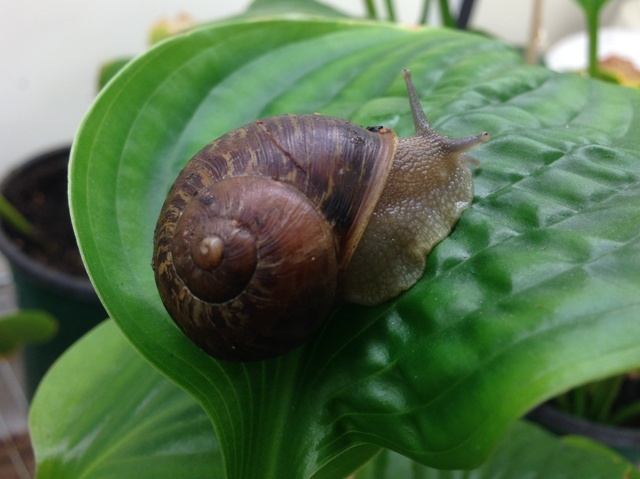Posts Tagged: Dani Lightle
May News Clips
City Visions: Tech and the future of smart, sustainable farming
(KALW), May 7, 2018
Host Ethan Elkind and guests explore the impact of new technologies on our agricultural industry.
What are the biggest challenges to our current food production system? And, how are Bay Area innovators meeting these challenges while promoting sustainability, efficiency and profitability?
Guests:
- Charles Baron, co-founder and vice-president of product at Farmer's Business Network.
- Jaleh Daie, Ph.D., founder and chair of AgriFood Tech and partner at Aurora Equity.
- Glenda Humiston, Ph.D., vice president of University of California's Division of Agriculture and Natural Resources.
http://kalw.org/post/city-visions-tech-and-future-smart-sustainable-farming#stream/0
Workshop planned on Napa fire prevention and best practices
(Napa Valley Register), May 7, 2018
A one-day seminar is planned for May 30 to look at the Napa ecosystem's recovery after the October wildfires and what policies are needed to reduce future fire impacts.
The workshop will be Wednesday, May 30, from 8 a.m. to 3:45 p.m. at Napa Valley College's Performing Arts Center, 2277 Napa Vallejo Highway.
Cost is $15 per person, with registration required at http://ucanr.edu/napafireworkshop2018. For more information, call 530-666-8143.
The program is sponsored by UC Cooperative Extension, Napa County Farm Bureau and the U.S. Department of Agriculture's Natural Resources Conservation Service.
Farming takes center stage at Yolo County Fairgrounds
(Woodland Daily Democrat) Cutter Hicks, May 4
Field trips to the fairgrounds led to a farming experience for students as the Yolo County 4-H and Farm Bureau hosted its 10th annual Farm Connection Day to kick off the Spring Show this weekend.
The four-hour event Friday featured more than 100 agricultural displays and hands-on activities for kids of all ages as nearly 2,500 visitors walked through the gates.
Farm Connection Day was open to the public and more than 200 4-H students teamed up to host the event — with a little help from adult volunteers. Their focus was to teach students of Yolo County the aspects of the organization before judging shows later that day.
DeAnn Tenhunfeld, a Farm Connection Day organizer, said that the attendance was the largest seen since she founded it in 2008.
http://www.dailydemocrat.com/business/20180504/farming-takes-center-stage-at-yolo-county-fairgrounds
Frost damage varied for California nut trees
(Farm Press) Robyn Rominger, May 2, 2018
Some almond growers experienced frost damage from recent freezing conditions, say University of California experts.
“There's really a lot of damage,” says Katherine Jarvis-Shean, UC Cooperative Extension orchard systems advisor for Sacramento, Solano, and Yolo counties. “The earlier varieties really took a hit. Some trees even dropped their nuts due to frost damage. It's pretty bad in some orchards.”
… Bruce Lampinen, UCCE almond and walnut specialist, measured temperatures in an almond trial at Davis, and notes that “Feb. 20 and 24 were the coldest days. It was very problematic because that's when the trees were in full bloom.” At full bloom, temperatures below 28 degrees F. can cause crop loss.
…Phoebe Gordon, UCCE orchard systems advisor for Madera and Merced counties, says, “From what I've seen and heard, the damage has been variable. Some orchards weren't hit that hard, and others were hit very hard. I think it depended a lot on micro-climate and what stage the trees were in. They become more susceptible to frost damage as they transition from dormant to full bloom, and to nut set. I don't think we'll really know until ‘June drop' is finished what the final load is.”
Dani Lightle, UCCE orchard systems advisor in Glenn and Butte counties, says, “Almonds were right in the middle of full bloom when the frost happened. Most of the orchards in my area seem to have escaped. We didn't seem to cross the threshold to where there was heavy damage. Of course, there are exceptions, but by and large we came out better in the end than we thought we would.”
New weapon in fight against walnut blight
(Farm Press) Robyn Rominger, May 2, 2018
Walnut growers have a new tool to help manage blight disease in their orchards — Kasumin 2L, manufactured by Arysta LifeScience, is the trade name for kasugamycin, and is available as part of a strategy to control the disease.
The new bactericide was discussed at a recent University of California Cooperative Extension breakfast meeting at Yuba City. “It's great to have another chemistry in the rotational loop for blight management in walnuts,” says Emily Symmes, UCCE integrated pest management advisor.
http://www.westernfarmpress.com/tree-nuts/new-weapon-fight-against-walnut-blight
Non-native snails introduced by French for escargot
Approximately 280 species of snails and slugs are found in California; 242 are thought to be native. The vast majority of the native species are not considered to be pests of nurseries or other production systems.
The most damaging snails and slugs are those that have been accidentally or purposely introduced from areas outside of the US. Most of California's pest gastropods are European species.
Other news:
The Chico News & Review published a profile of local UC ANR Cooperative Extension farm advsior Dani Lightle. Lightle works with Glenn County growers of walnuts, almonds, prunes, olives, pistachios, pecans and fruit. “Basically, if it grows on a tree, it comes my way,” said Lightle, referring to the calls she receives at her Orland office. The article provided background information about UC Cooperative Extension and ANR. "The system's purpose was to be a bridge between public universities and the general public," the article says.
The news website Ensia.com reported on research underway in Northern California on the role of bats in orchard pest control. An intern, under the guidance of UC ANR farm advisor Rachael Long, is comparing orchards with nearby bat boxes with orchards that do not have the convenient dwellings for the flying rodents. "If you increase diversity by relying on insects, bats, raptors, etc., you help strengthen your farming system," Long said.

